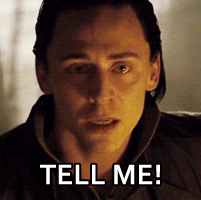What is Pacing?

No, it's not what you do when you're stuck on a scene and need to get up and stretch those leg muscles to get your writing juices flowing. It's actually a very important ability that writers have to control the speed their story is read. You as the author get to manipulate the reader in a way and make the speed of the story match the scene. What better way to drop the reader right into the moment? But, pacing also holds the ability to make or break your story and keep or lose your reader's interest. This is why it's so important in writing.
Setting the Scene:

One of the magical things about pacing is that you the writer get to capture the mood and tone of the moment with your words and make it visible to the reader. For instance, if you're writing an action packed fight scene, short, fast, and sometimes choppy sentences show a sense of urgency and make the scene move along faster-- just like the intensity of the moment in the story itself. In a more serene scene, lengthier sentences or more description to slow down the pacing may be necessary. The first example with the quick pacing gives the reader little time to catch their breath before the next action, whereas the second example gives them a refreshing breather. You as the writer, however, need to decide which is most appropriate for which scenes and apply them well. A good way to do this is to think of your own favorite novels or stories. How did those authors deal with pacing through different scenes? Of course, pacing factors heavily with another phrase that most prose writers have heard since their start in writing...
Show vs. Tell:
Let's face it. You've heard "show, don't tell" from teachers/professors, workshop partners, critiques on and off site, etc. But just how do you show and not tell. Believe it or not, pacing has a lot to do with it. Like mentioned in Setting the Scene, your pace can give a feeling in your story of the tone/emotion/mood of your work. Just by your sentence structure, you are showing your reader something! Of course, there is more to showing and telling than just pace used like this, but it does play a part in ways that you can work on your troubles with showing.
A very wonderful and wise editor once told me that when it comes to showing, "write like you're looking through the lens of a movie camera." Instead of just using short sentences and telling your audience what's happening, slow things down and write what you would see through the lens. (This method still can create forms of "telling" in stories, but when it comes to characters and emotions, I think it's the strongest).
Actions Speak Louder Than Words:

Continuing with Show vs. Tell, here are some ways to bring out the show in your work and ditch the tell:
Let's use the example from the gif I posted above. The author writes: "She lost control." This is a form of telling. There are many other ways to show the reader that "she lost control" without just coming out and telling them. For instance, if "control" here, we mean her life, as in things start to spiral away from her and she can't cope any more, you can "show" it by never having to say that "she lost control" by what happens around her. Maybe she loses her job. Maybe she's starting to panic about petty things. Maybe she begins to overdose on anti-depressants. Without saying these things, the build up and showing of them in sequence (even over a long period of time) is good enough to show the reader that, hey, she's losing control of herself. Aren't these actions stronger than words? Another example would be, for instance, a character being nervous. Instead of saying "He was nervous", show it through some stuttered speech, the character playing with his hands or shifting on his feet. Perhaps he becomes clumsy or needs to fiddle with some random object. These details just scream nervous to the reader-- without ever having to say it. (After all, in a movie, we're never told "HE IS ANGRY" over his head. We see it based on the actor's actions or body language. You want to use the same in writing).
When it comes to description, some find it easier to show in these areas, but it's still important to cover. Instead of saying "It was raining" (which is fine every once in a while), perhaps switch it up from time to time and describe it further. Get the reader's senses to work. Perhaps using something like "The rain beat against the plexiglass window" is stronger in this case. Why? Not only does the reader now know that it's raining, but they can hear the sound it makes by the force implied with "beat" and the surface it's striking: "plexiglass". It's easier for the reader to envision than simply "It was raining".
Typically, the short, choppy and often telling sentences come off in writing as rushed. How many of you have heard that one before in critiques? Perhaps now you see why a little better. Look at a section of your writing where you've been told it sounded "rushed" and go back through. Are your characters' actions speaking louder than your words? Are your descriptions able to capture and play with your readers' senses? If not, you may want to tweak those areas and see what you can come up with.
When it's Okay to Tell:

However, there's also a point at where things can get too rambley, so don't be afraid to tell here or there or keep those shorter sentences in. A whole paragraph repeating every last detail of what your character had for lunch isn't entirely necessary. Do we really need to know every detail of the same tuna sandwich he has every day on rye with pickles, onions, mayo, mustard, and pepper-- hold the tomatoes? Do we really need to know exactly what that sandwich tasted like? And do we really need to know how he eats? Unless it truly says something important about the character or the plot, it's safe to say that you're better off just saying "He had the usual tuna sandwich." to sum it up and imply that he eats this often. Minor details like these that don't move the plot along aren't necessary to dwell on.
If it's something not relevant to your overall plot, a quick mention like the example above is just fine. Too much showing of unnecessary things bogs your writing down and makes it tedious and "rambley". Everything you write should be pushing forward in your writing and advancing towards the end and fulfilling the plot. If you waste a whole paragraph on describing a sandwich that the character eats once and has no other purpose than to have him/her in the break room at work to witness something to drive the story forward, it's not worth it. Make everything you write count!
Sentence Structure:

Another big part of pacing comes from your sentence structure. You don't want your page to look like a sloppy mess, or even just a bunch of copy and pasted lines. Balance is important. Using the same types of sentences over and over again can lead to monotonous pacing-- which is something that can drown your readers in boredom. The solution? Sentence variation. If you've got a bunch of short, choppy sentences, don't be afraid to throw in a longer one here and there. And, of course, if you have longer sentences typically, make sure to have some shorter ones, too (even fragments)! Your words flow much smoother with variation and choosing specific areas to be shorter or longer, like back in the first section stated, can really bring your work to its full potential.
Conclusion & Questions:

So, as you probably can see, pacing is something very important to your writing. With it, you can really bring your story to life and get inside your readers' minds and control how you want them to read your story. It's the speed your story is read, the tone/mood your story is read, and ultimately, what's going to keep your reader invested on the page. Pace is power!
Now, here are some questions for you to answer in the comments:
- Have you ever been told you have trouble with pacing? If so, what? (Too rushed, too rambley, etc.)
- Have you ever struggled with showing vs. telling?
- If yes to the last question, have you ever been told how to "show and not tell" beyond just hearing "show, don't tell"?
- What are some ways that you deal with pacing in your own writing?
![]() And for fun, take a piece that you were told was "too rushed", "too rambley", or "needed more showing" and clean it up! See if you can tweak its pacing and make it a stronger piece overall.
And for fun, take a piece that you were told was "too rushed", "too rambley", or "needed more showing" and clean it up! See if you can tweak its pacing and make it a stronger piece overall.
Go out there with your new knowledge of pacing and make some beautiful works of prose!



